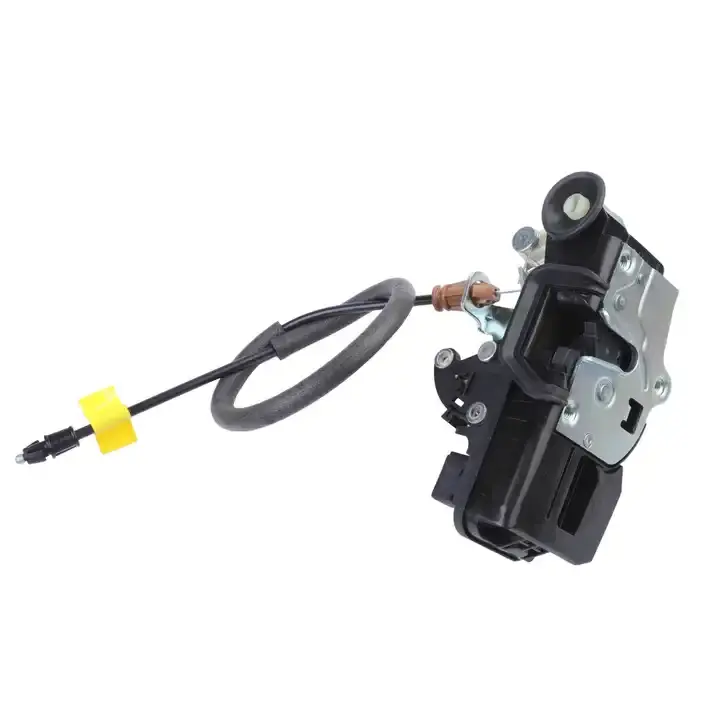When it comes to vehicle maintenance, understanding how to safely remove and replace a car door lock cylinder is essential. Whether your door lock actuator is malfunctioning or you're upgrading your security system, this guide will walk you through the process with clear, step-by-step instructions.
A door lock actuator is a critical component of your car's locking system. It controls the mechanism that locks and unlocks the car doors. Over time, door lock actuators can wear out or fail, leading to issues such as doors not locking or unlocking properly. When replacing a car door lock cylinder, it's often necessary to check the door lock actuator as well.

Tools and Materials Needed
Before you begin, ensure you have the following tools and materials:
- Screwdrivers (Phillips and flathead)
- Torx screwdriver set
- Pliers
- Trim removal tool
- Replacement door lock cylinder
- Lubricant spray (optional)
- Safety gloves
Safety Precautions
Safety should always be your top priority. Here are some essential safety tips:
- Disconnect the Battery: Before working on your car’s electrical system, always disconnect the battery to prevent accidental shocks.
- Wear Safety Gear: Use gloves to protect your hands from sharp edges and other potential injuries.
- Work in a Well-Lit Area: Ensure your workspace is well-lit to avoid mistakes and accidents.
Step-by-Step Guide to Remove and Replace a Car Door Lock Cylinder
Step 1: Remove the Door Panel
- Locate the Screws: Most car door panels are secured with screws located around the edges and near the door handle. Use a screwdriver to remove these screws.
- Remove the Door Handle: Carefully pry off the door handle cover and remove the screws underneath.
- Detach the Trim: Use a trim removal tool to gently detach the trim from the door panel.
- Lift the Panel: Lift the door panel away from the door, starting from the bottom and working your way up.
Step 2: Disconnect the Door Lock Actuator
- Locate the Actuator: The door lock actuator is usually located near the door latch.
- Disconnect the Wiring: Carefully disconnect the electrical wiring connected to the door lock actuator.
- Remove the Actuator: Unscrew the actuator from its mounting position and set it aside.
Step 3: Remove the Door Lock Cylinder
- Locate the Retaining Clip: The door lock cylinder is held in place by a retaining clip or bolt. Locate and remove this clip or bolt.
- Extract the Cylinder: Carefully pull the lock cylinder out of the door. You might need to wiggle it slightly to loosen it.
Step 4: Install the New Door Lock Cylinder
- Insert the New Cylinder: Place the new door lock cylinder into the slot where the old one was removed.
- Secure the Cylinder: Replace the retaining clip or bolt to secure the new lock cylinder in place.
- Reconnect the Actuator: Reattach the door lock actuator by screwing it back into its mounting position and reconnecting the electrical wiring.
Step 5: Reattach the Door Panel
- Align the Panel: Align the door panel with the door frame and press it into place.
- Replace the Screws: Secure the panel by replacing all screws removed earlier.
- Reattach the Door Handle: Reattach the door handle and cover.
Step 6: Test the New Lock
- Reconnect the Battery: Reconnect the car battery.
- Test the Lock: Test the new lock cylinder by locking and unlocking the door several times to ensure it functions correctly.
Troubleshooting Tips
If you encounter any issues during the process, here are a few tips:
- Check Connections: Ensure all electrical connections are secure.
- Lubricate the Lock: If the new lock cylinder feels stiff, apply a small amount of lubricant spray.
- Recheck the Actuator: If the door does not lock or unlock, double-check the door lock actuator for proper installation.
Conclusion
Replacing a car door lock cylinder can seem daunting, but with the right tools and careful attention to detail, it’s a task that can be completed by most car owners. Remember to always consider the condition of the door lock actuator when performing this task, as it plays a crucial role in the overall functionality of your car’s locking system.
By following this guide, you can ensure that your car's doors are secure and functioning correctly, providing peace of mind and enhanced vehicle security.
